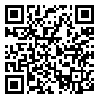Volume 22, Issue 4 (11-2022)
ijdld 2022, 22(4): 213-223 |
Back to browse issues page
Download citation:
BibTeX | RIS | EndNote | Medlars | ProCite | Reference Manager | RefWorks
Send citation to:



BibTeX | RIS | EndNote | Medlars | ProCite | Reference Manager | RefWorks
Send citation to:
Tahmasbi A, Movahednasab M, Hamedi M, Vosooghi-postin doz V, Lotfi R. Impact of Crocus Sativus Petals Extract and Alkaline Electrolyzed Water in Diabetic Rats with Streptozotocin. ijdld 2022; 22 (4) :213-223
URL: http://ijdld.tums.ac.ir/article-1-6167-en.html
URL: http://ijdld.tums.ac.ir/article-1-6167-en.html
Abdolmansour Tahmasbi * 

 1, Mehrdad Movahednasab2
1, Mehrdad Movahednasab2 

 , Melika Hamedi2
, Melika Hamedi2 

 , Vahid Vosooghi-postin doz2
, Vahid Vosooghi-postin doz2 

 , Reza Lotfi2
, Reza Lotfi2 




 1, Mehrdad Movahednasab2
1, Mehrdad Movahednasab2 

 , Melika Hamedi2
, Melika Hamedi2 

 , Vahid Vosooghi-postin doz2
, Vahid Vosooghi-postin doz2 

 , Reza Lotfi2
, Reza Lotfi2 


1- Department of Animal Sciences, Faculty of Agriculture, Ferdowsi University of Mashhad, Mashhad, Iran , tahmasebi@ferdowsi.um.ac.ir
2- Department of Animal Sciences, Faculty of Agriculture, Ferdowsi University of Mashhad, Mashhad, Iran
2- Department of Animal Sciences, Faculty of Agriculture, Ferdowsi University of Mashhad, Mashhad, Iran
Abstract: (947 Views)
Backgrund: Saffron petals contain flavonoid compounds, glycosides, and anthocyanins. Considering the trend of increasing the use of medicinal plants in modern medicine in order to treat some diseases, the upcoming experiment was designed to investigate the effectiveness of the hydroalcoholic extract of saffron petals and alkaline water in comparison with the commercial drug metformin on the blood glucose level of diabetic rats.
Methods: In this experiment, 28 male Wistar rats were divided into 4 groups. 1) Diabetic animals (negative control), 2) Diabetic animals that received 200 mg of dry saffron petal extract daily, 3) Diabetic animals that had free access to alkaline water, 4) Diabetic animals that received 100 mg/kg BW metformin daily. They did the duration of the experiment was considered to be 28 days. During this period, feed and water consumption will be measured and recorded on a daily basis and weight on a weekly basis. At the end of the experiment, blood biochemical indices were measured.
Results: Weight and blood triglycerides were not affected by experimental treatments. While the feed consumed, water consumed, insulin, glucose, cholesterol, HDL, LDL and liver enzymes were significantly affected by the experimental treatments.
Conclusion: According to the results, the use of alkaline water and saffron petal extract positively reduced the blood glucose of mice and also had significant effects on feed and water consumption, cholesterol, HDL and LDL of animals. However, the definitive confirmation of the results of this experiment requires more studies and investigations in this field.
Methods: In this experiment, 28 male Wistar rats were divided into 4 groups. 1) Diabetic animals (negative control), 2) Diabetic animals that received 200 mg of dry saffron petal extract daily, 3) Diabetic animals that had free access to alkaline water, 4) Diabetic animals that received 100 mg/kg BW metformin daily. They did the duration of the experiment was considered to be 28 days. During this period, feed and water consumption will be measured and recorded on a daily basis and weight on a weekly basis. At the end of the experiment, blood biochemical indices were measured.
Results: Weight and blood triglycerides were not affected by experimental treatments. While the feed consumed, water consumed, insulin, glucose, cholesterol, HDL, LDL and liver enzymes were significantly affected by the experimental treatments.
Conclusion: According to the results, the use of alkaline water and saffron petal extract positively reduced the blood glucose of mice and also had significant effects on feed and water consumption, cholesterol, HDL and LDL of animals. However, the definitive confirmation of the results of this experiment requires more studies and investigations in this field.
Type of Study: Research |
Subject:
Special
Received: 2022/07/13 | Accepted: 2022/11/13 | Published: 2022/11/1
Received: 2022/07/13 | Accepted: 2022/11/13 | Published: 2022/11/1
Send email to the article author
| Rights and permissions | |
 |
This work is licensed under a Creative Commons Attribution-NonCommercial 4.0 International License. |



